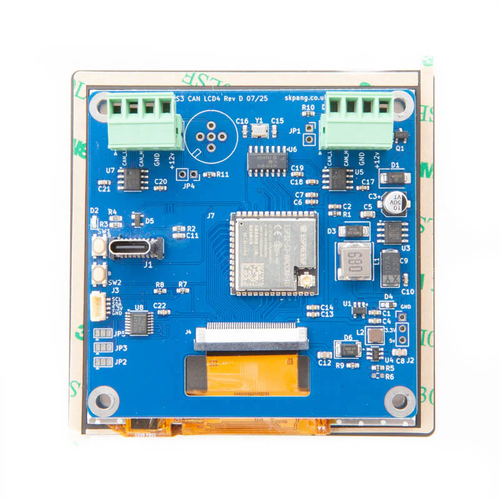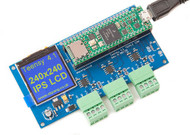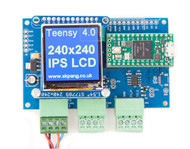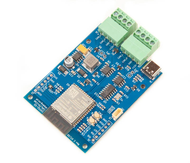Product Description
Free Shipping Within the United States!
This board is powered by the Espressif ESP32-S3-WROOM-1U-N16R8 module, a high-performance SoC featuring integrated Wi-Fi, Bluetooth Classic, and Bluetooth Low Energy (BLE). Wireless connectivity is achieved through an external antenna (not included), connected via a u.FL connector, providing flexibility in placement and signal optimization.
The ESP32-S3 is built on a dual-core Xtensa® LX7 processor, operating at up to 240 MHz, and includes 16 MB of flash and 8 MB of PSRAM, enabling complex applications and rich user interfaces. It supports AI acceleration for certain edge computing tasks, thanks to its built-in vector instructions and hardware-accelerated neural network operations.
Connectivity Features:
-
Classic CAN interface is natively supported by the ESP32-S3, accessible via connector J6, allowing communication with legacy CAN 2.0B networks.
-
CAN FD support is provided through a dedicated Microchip MCP2518FD controller connected via SPI, available on connector J5, enabling higher data rates and larger payloads in modern automotive and industrial networks.
Display and UI:
The board is equipped with a 4.0-inch 480x480 IPS LCD panel featuring capacitive multi-touch input for an intuitive and responsive user experience. The display supports high color fidelity and wide viewing angles, making it ideal for modern HMI applications.
Features
- ESP32-S3 series of SoCs embedded, Xtensa® dual-core 32-bit LX7 microprocessor (with single precision FPU), up to 240 MHz
- 16MB Quad SPI flash
- 8MB PSRAM
- Bluetooth LE, Bluetooth 5 and Bluetooth mesh, requires external antenna
- Wifi 802.11b/g/n, requires external antenna
- Programming via USB-C connector
- Boot and Reset push button
- MCP2518FD CAN FD controller and CAN transceiver (J5)
- Classic CAN transceiver (J6)
- I2C connector for sensors
- Supply voltage : 7 VDC to 24 VDC SMPS module with reverse polarity protection
- Red LED on GPIO18
- IPS LCD Panel
- 480x480 pixel
- Panel dimension : 74.66(W)x76.54(H)x2.1(T)mm
- Visual Area : 72.86x71.18mm
- Active Area : 71.86(W)x70.18(H)mm
- Viewing Angle : Left:80.0 , Right:80.0 , Up:80.0 , Down:80.0 degree
- Brightness(Typ) : 400cd/m2
- Capacitive Touch controller GT911 with I2C interface
Documents
Ensure to select:
- Board:ESP32S3 Dev Module
- USB CDC On Boot "Enabled"
- PSRAM: "OPI PSRAM"
- Upload Mode: "USB-TG CDC (Tiny USB)"
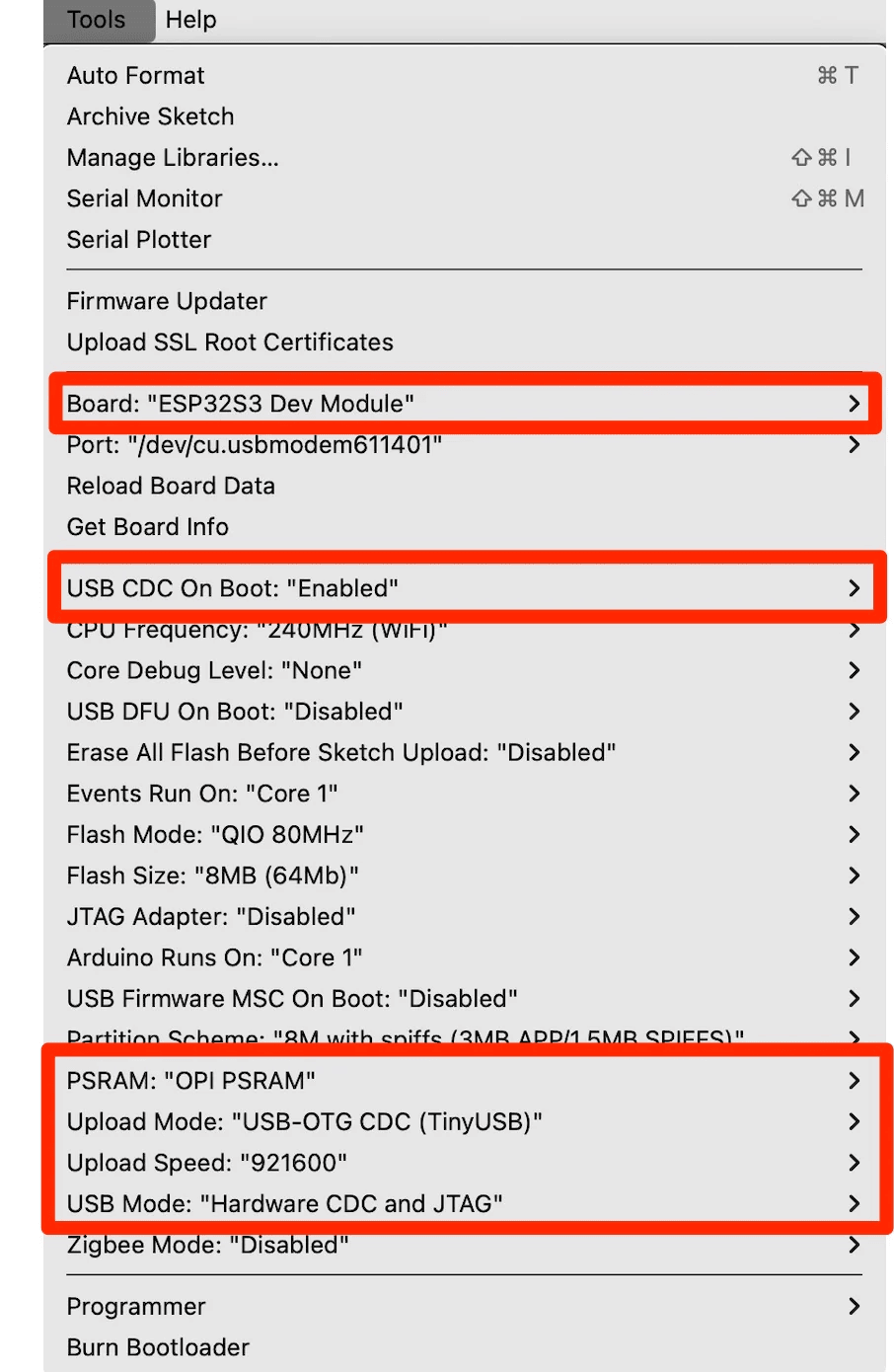
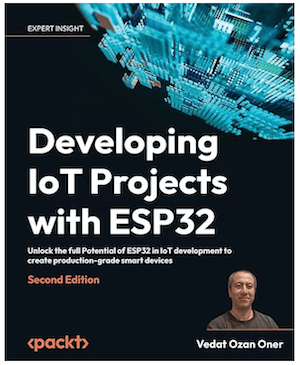 ESP32, the low-cost, energy-efficient system-on-a-chip (SoC) microcontroller, has become a cornerstone of modern Wi-Fi-enabled devices, driving innovation across the Internet of Things (IoT) landscape. This comprehensive guide offers a practical, end-to-end approach to building secure, scalable IoT systems using the powerful ESP32 platform.
ESP32, the low-cost, energy-efficient system-on-a-chip (SoC) microcontroller, has become a cornerstone of modern Wi-Fi-enabled devices, driving innovation across the Internet of Things (IoT) landscape. This comprehensive guide offers a practical, end-to-end approach to building secure, scalable IoT systems using the powerful ESP32 platform.
From foundational concepts to advanced implementation, the book walks you through the complete lifecycle of developing an IoT device with ESP32. Beginning with essential IoT principles and real-world use cases, each chapter progressively builds your skills—covering sensor communication, integration of key libraries like LittleFS and LVGL, Wi-Fi connectivity, data security, and cloud integration. You'll also learn how to visualize real-time data using tools like Grafana, making your solutions truly production-ready.
A special section is dedicated to artificial intelligence and machine learning (AI/ML) for embedded systems. You'll explore how to build and deploy tinyML models on the ESP32-S3, enabling intelligent edge computing capabilities for your next-generation embedded products.
Adopting a hands-on, project-driven approach, the book ensures that you can apply your knowledge from day one. As a capstone, you'll develop a full-scale Smart Home system, consolidating all the concepts and technologies explored throughout the book.
Whether you're a maker, engineer, or embedded systems developer, this book equips you to build secure, real-world IoT solutions with ESP32—ready for deployment in today’s connected world. More information...
 Loading... Please wait...
Loading... Please wait...

